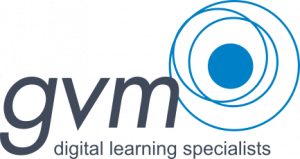Last week I gave some practical examples of xAPI in use. It was really well received so I thought I’d offer some more this week. This one is by GVM’s xAPI collaborators and is timely – it’s launching this week to a national Audience across the USA. (Go team!)
The USA’s Department of Health chose our collaborators and their tool Rustici engine– the ones we work with here and is a pretty good example of why we chose Rustici.
Side note: the Rustici Engine will shortly be embedded in our flagship LMS as both products are now owned by the same company and are part of the same suite – PeopleFluent (NetDimensions) LMS.
The scale and ambition of the new system is vast – it will be a national initiative of America’s Federal Department of Health who have a critical need to reduce the perennial problem of staff turnover in the sector. At the moment the turnover rate for graduate nurses is a whopping 35%. With a direct cost per nurse of almost $AUD 100,000 each time a nurse leaves the sector. It was described as an “epidemic” by Marshall University. That is set to change.
The entire initiative is (in its own words) “Not in the LMS Business”. The initiative is in the diversified content and analytics business. With quality data and multiple training options, the LMS can be smarter. It becomes part of a much bigger picture and is allowed to be used for what it does best.
… and you can get a sneak preview here
xAPI’s genius is the ability to relate training to “doing” – to the coal face. We can measure the real world skills of people, how they learn on the job and where we deliver formal training, we can measure directly the outcomes! In a sector such as health this is critical. Not only that, but it’s instantly engaging! Professionals dislike programs that focus exclusively on what they don’t know and simply teach when they could also demonstrate what they do know and focus on building on that (as well as learning formally). This is the secret to the USA’s new and exciting initiative Transition to Practice.
In America, the national competency framework is owned by the health sector itself and until now has been linked only to formal training. As of now, that is set to change.
xAPI allows any learning experience or activity to be related back to the framework and, when combined with good analysis, experiences will be proactive and personalised. In making learning vastly more relevant and interesting, by creating a holistic learning culture, by using technologies to find out how best to support each person, the USA will finally drive the heavy cost of staff turnover down.
Q) So what Is Learning Analytics and why is PeopleFluent doing so much in this space?
A) Measuring, collecting and analysing information about learners (and context) so that an organisaiton can:
- help them engage in their own learning (metacognition)
- help to optimise learning products for the way they are found to be used
- help develop and retain talent
xAPI will allow the Department to engage with practitioners from the time they leave college, helping them in a range of ways to continue developing, monitoring and aiding on the of results and mapping every experience to nationally accredited competencies.
The model
- The system will provide cause authors with a list of standardised and verified xAPI profiles to choose from when they design an experience.
- The profile will then ensure the appropriate information is captured in a repoeatable way to create meaningful learning experiences.
- As learners undertake the experiences, the system will generate insightful visualisations of the xAPI data informed by the profile.
- Armed with this, the platform will help authors continuously improve training and provide learners with the first holistic view of their progress – not just on exams, but in the field. Not just on clinical knowledge but on soft skills competencies.
So what are we capturing? Well before I tell you that I want to remind you what we are capturing it from. At first glance you will think “My LMS does that now!” – yes, but not when someone’s not logged in to the LMS it doesn’t! This is data collected while the person works with a patient, uses the VR system, reads a document on your intranet, operates equipment or meets with a supervisor too!
So imagine capturing the following in those contexts…
Phase 1:
- States of Learning Progress (assigned, started, completed)
- Score
- Completion Date
Phase 2:
- events and interactions within learning experiences – what was clicked, what objects are present in a VR experience etc
- Time spent in lesson, section, activity, video etc
- Learning gaps individually and by group based on results from individual questions
So now…. I’m really keen to hear from you all – what could you do with that kind of information to solve a real problem in your workplace?
